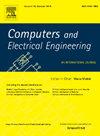基于 CondenseNet 和 CoAtNet 的有效 IDS,适用于 SDN-IoT 环境
IF 4
3区 计算机科学
Q1 COMPUTER SCIENCE, HARDWARE & ARCHITECTURE
引用次数: 0
摘要
一种被称为物联网(IoT)的发展技术允许智能对象通过各种异构通道进行交互,无论是有线还是无线。然而,对于传统网络来说,有效地控制和管理众多设备的数据流已经变得非常困难。软件定义网络(SDN)为这一问题提供了解决方案。它试图解决几个物联网问题,如灵活性、多样性和复杂性,因为它是可编程的、适应性强的、快速的,并提供了广泛的网络概述。因此,本研究中提出的攻击检测和缓解系统利用深度学习技术来分析SDN日志。一旦攻击检测过程开始,就可以使用各种技术对输入数据进行预处理,以替换缺失的值,并为后续处理准备数据。随后,利用CondenseNet和Osprey Optimization Algorithm (OOA)进行特征提取和选择,以识别更多值得注意的特征。最后,基于coatnet的分类器提供了非常准确的攻击预测,该分类器负责识别入侵。针对入侵检测后的网络攻击,提出了有效的防御措施。在此基础上,提出了一种条件表格生成对抗网络来增强数据并修正类别不平衡。为了验证我们提出的模型,我们在InSDN、Bot-IoT和IoT-23数据集上进行了研究和测试,分别达到了99.74%、99.61%和99.64%的准确率。这些实验结果表明,所建议的框架比目前最先进的系统性能更好,实现了更高的准确性和更低的误报率。本文章由计算机程序翻译,如有差异,请以英文原文为准。
An effective IDS using CondenseNet and CoAtNet based approach for SDN-IoT environment
A developing technology called the Internet of Things (IoT) allows smart objects to interact over various heterogeneous channels, whether wired or wireless. However, for traditional networks, effectively controlling and managing the data flows of many devices has become difficult. Software-defined networking (SDN) provides a solution to this problem. It has attempted to address several IoT issues, such as flexibility, diversity, and intricacy, because it is programmable, adaptable, fast, and provides a broad overview of the network. As a result, the system for attack detection and mitigation presented in this research leverages deep learning techniques to analyze SDN logs. Once the attack detection process has begun, the input data can be preprocessed using various techniques to replace missing values and prepare the data for additional processing. Subsequently, CondenseNet and Osprey Optimization Algorithm (OOA) are utilized for feature extraction and selection to identify more noteworthy characteristics. Lastly, the very accurate attack prediction is provided by the CoAtNet-based classifier, which is in charge of identifying intrusions. An efficient mitigation procedure was carried out to shield the network from attack after intrusion detection. Furthermore, a conditional tabular generative adversarial network is used to augment the data and correct class imbalance. To validate our proposed model, we conducted research and testing on InSDN, Bot-IoT, and IoT-23 datasets and achieved 99.74 %, 99.61 %, and 99.64 % accuracy, respectively. These experimental findings demonstrate that the suggested framework performs better than current state-of-the-art systems, achieving higher accuracy and a lower false alarm rate.
求助全文
通过发布文献求助,成功后即可免费获取论文全文。
去求助
来源期刊

Computers & Electrical Engineering
工程技术-工程:电子与电气
CiteScore
9.20
自引率
7.00%
发文量
661
审稿时长
47 days
期刊介绍:
The impact of computers has nowhere been more revolutionary than in electrical engineering. The design, analysis, and operation of electrical and electronic systems are now dominated by computers, a transformation that has been motivated by the natural ease of interface between computers and electrical systems, and the promise of spectacular improvements in speed and efficiency.
Published since 1973, Computers & Electrical Engineering provides rapid publication of topical research into the integration of computer technology and computational techniques with electrical and electronic systems. The journal publishes papers featuring novel implementations of computers and computational techniques in areas like signal and image processing, high-performance computing, parallel processing, and communications. Special attention will be paid to papers describing innovative architectures, algorithms, and software tools.
 求助内容:
求助内容: 应助结果提醒方式:
应助结果提醒方式:


